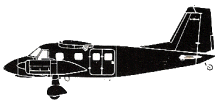Incident Overview

Description
As the aircraft became airborne from runway 22R and was over the runway end at an altitude of approximately 500 feet, the right engine failed. The cockpit crew cancelled the planned flight and returned to CPH. The aircraft was landed on runway 22L without further incident. The aircraft was brought to a stop on taxiway B due to the Fire and Rescue Service’s observation of smoke from the right engine. Passengers were evacuated via the aircraft’s front normal exit and were subsequently taken to the airport terminal. The accident occurred in daylight under visual meteorological conditions (VMC). Summary: Oil leakage from the No. 5 bearing installation was indicative of a major hot air leak into the No. 5 bearing oil system, resulting in increased oil consumption. The high oil consumption of the engine, relative to comparable engines operated by the airline, was caused by internal oil leaks and oil fires in the engine hot section. The troubleshooting initiated by the operator did not reveal the cause of the oil consumption. The engine design and engine assembly procedures allowed for internal leaks in the bearing #5 installation. Hot air from the area in front of the high-pressure turbine had entered the shielded bearing area through an internal leak, causing ignition of the bearings’ lubricating oil. The oil fire led to annealing and rupture of the high-pressure turbine shaft. As no direct path for the hot air to enter the oil system was found, the only possible path for the hot air to reach the oil in the bearing no. 5 installation was via a stuck or hanging carbon seal for bearing no. 5.
Primary Cause
Internal oil leaks and oil fires within the engine hot section.Internal oil leaks and oil fires within the engine hot section.Share on:





